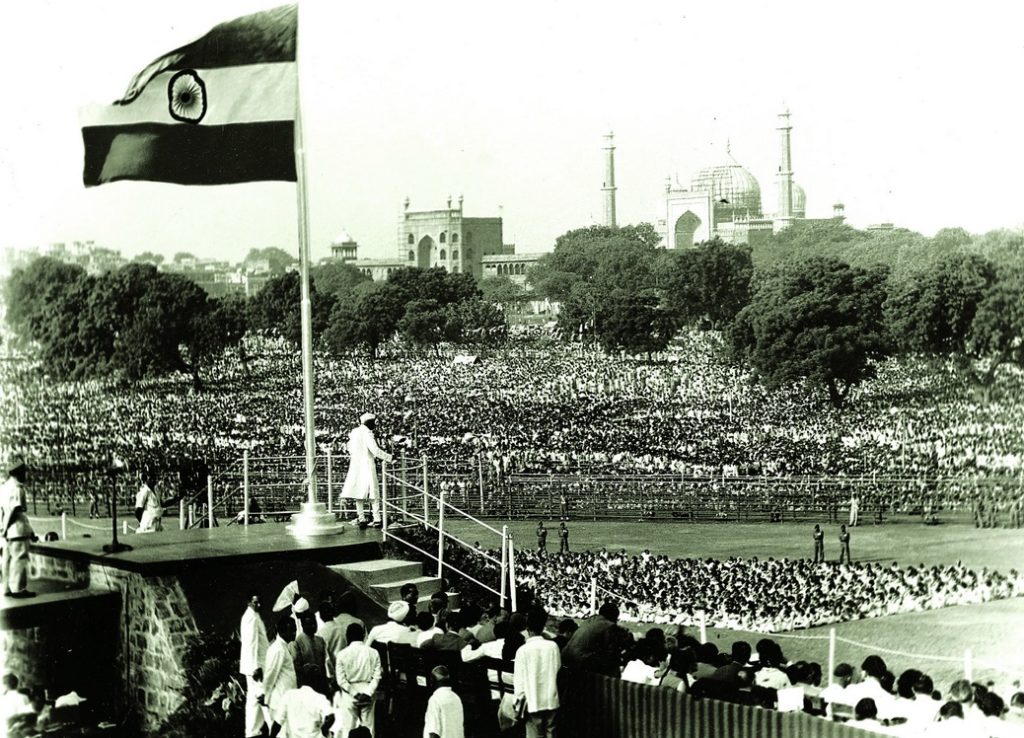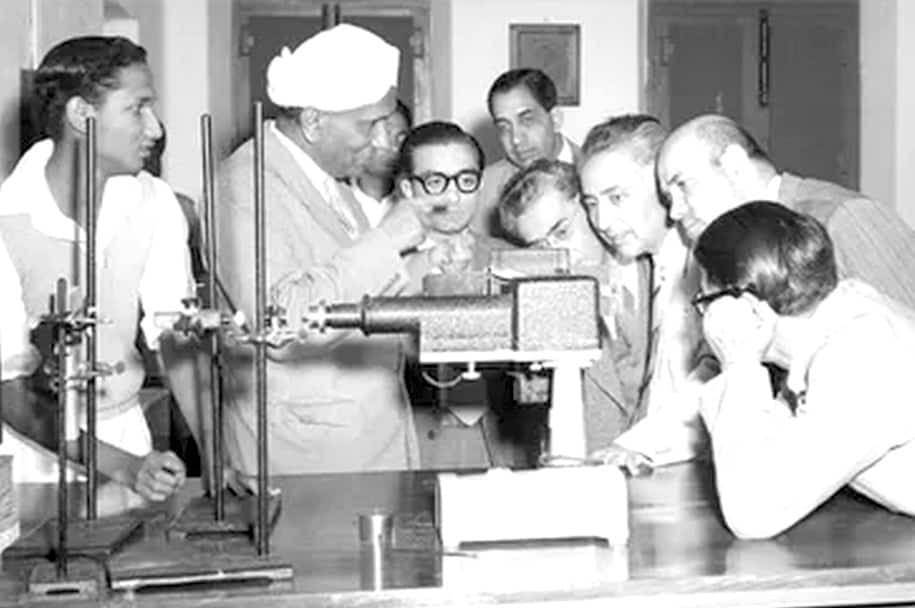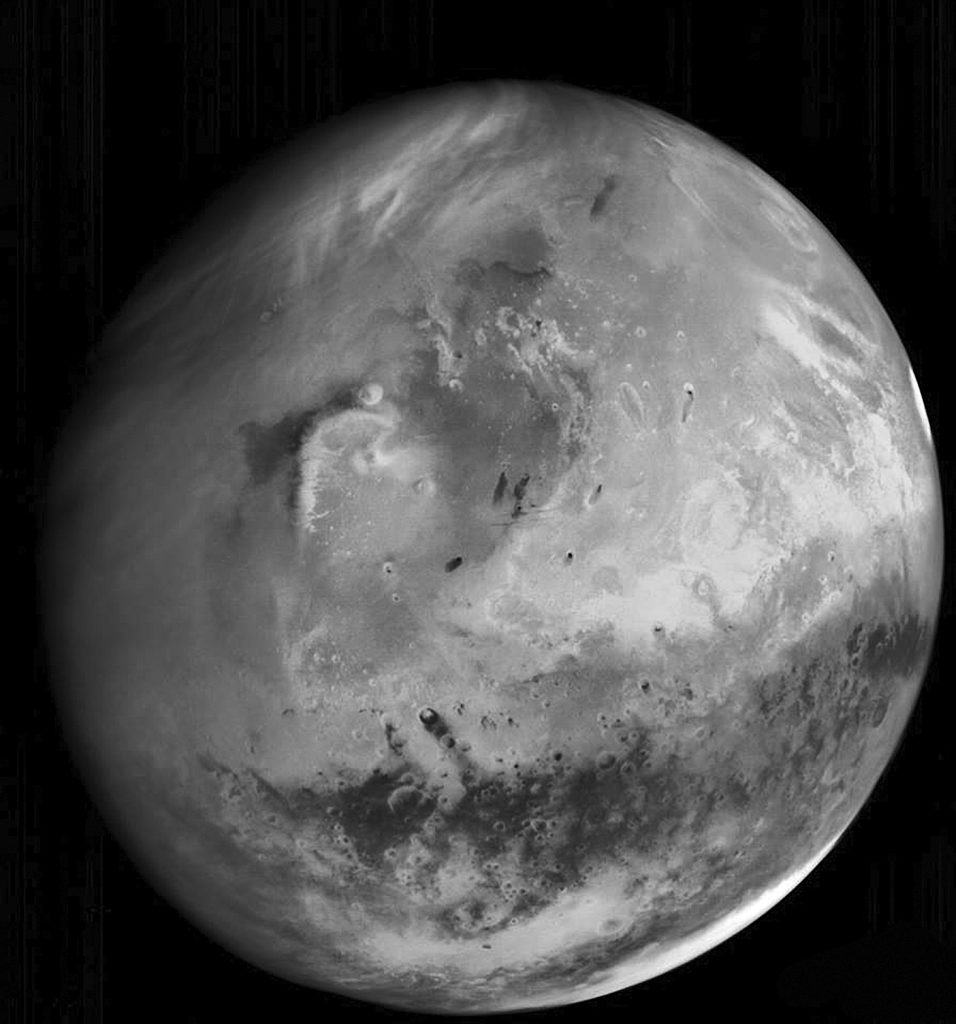
There are around 3000 operational satellites around Earth right now. Just over 50 were designed, built and launched from India. Collectively they provide services for communication, television, navigation and Earth observation. In the pursuit of science, India has Astrosat, a space telescope in Earth orbit, Chandrayaan-2 in lunar orbit and India’s first mission to Mars, launched in 2013 is still providing data almost a decade on.
The Indian Space programme started 21st November 1963 with the launch of the first rocket into space from Indian soil. Since then, India has developed a comprehensive infrastructure to design, build, launch and operate spacecraft in orbit. Why did India choose such a seemingly impossible path for a developing nation just a decade and a half after independence?
There are three primary reasons. First, Jawaharlal Nehru, independent India’s first prime minister, had a very clear vision of India’s future forged on the anvil of science and technology. Second, a coincidence of timing – the space age arrived (with the launch of Sputnik in 1957) on his watch. India could have chosen the road for economic development that the West had traversed since the industrial revolution, or leap headlong into the 20th century and join the space race, a race in which the West was ahead but not by very much. Third, the commitment of a few accomplished scientists and intellectually gifted who had the commitment and potential to realise Nehru’s bold ambitions of an India with a vibrant, flourishing first world economy.
India built on science and technology

Despite his public adherence to the rituals and tradition of the faith that Nehru was born into, he considered himself more a Humanist than a Hindu. In his will he declared he did not want “any religious ceremonies performed for me after my death”. He embedded his vision of a forward-looking, science based future of India in the constitution. In Article 51A of the Constitution of India, which came into effect in 1950, Nehru codified the central role of science, requiring that every citizen of India shall “develop the scientific temper, humanism and the spirit of inquiry and reform”.
The tradition of scientific investigation was well established in India long before the British arrived. During the three hundred years of British occupation, science conducted in India was the science that only benefited Britain. Despite these restrictions, the practice of science by Indians in India, during the colonial period, made some progress.
Pioneers in Science

In 1894 JC Bose demonstrated the potential for radio communication by triggering an explosion of a small sample of gunpowder using radio waves. In 1918, with Albert Einstein’s consent, SN Bose published the first English translation of Albert Einstein’ s landmark work on General Relativity in Calcutta. Bose’s contribution is recognised in Physics today through the Bose-Einstein Condensate and the Boson.
By the age of 42, CV Raman who had been educated and trained entirely in India, was elected as a Fellow of the Royal Society in 1924, knighted by the British government in 1929 and won the Nobel Prize in Physics in 1930.
Origins of India’s Space Programme
In the summer of 1939, Homi Bhabha was visiting India prior to starting a new role at the University of Manchester, England. Then WW2 broke out. Bhabha remained in India and developed the Atomic Energy Commission and in 1962 the Indian National Committee for Space Research and put Vikram Sarabhai in charge. Both Bhabha and Sarabhai came from successful business families known across India. They had also studied Physics in Cambridge. It was these connections in high society in India and amongst the international scientific community that Vikram Sarabhai exploited in growing the international collaboration that was critical for India to jut-start its space programme from a standing start.
International Collaboration
The Cold War forced many countries to choose between the democratic capital West and the Communist East. Despite the geopolitical bifurcation between NATO and the Warsaw Pact, Nehru ensured India took no side and remained Non-aligned. Sarabhai exploited this position further by attracting support for the nascent Indian space programme from USSR, France, USA and Britain. It was this step-by-step progress by which Sarabhai ensured Indian space scientists and engineers acquired hands-on experience working abroad, then built spacecraft and launch vehicles under license in India before gradually becoming fully self-reliant in space.
The Indian Space Research Organisation was established in 1969. Today ISRO is recognised as a leading operator in space. Launched in 2007, ISRO’s Chandrayaan-1 mission to the Moon was probably the most challenging and successful mission to date. It took place in an age before social media and does not have the recognition it deserves. It carried instruments from USA, Japan, Sweden, Bulgaria and UK. It was this mission that made the first unequal detection of huge quantities of water near the lunar south pole. ISRO today has active collaboration projects with other leading space agencies. They include:
- Roscosmos – India announced its human spaceflight mission Gaganyaan in 2018. Russia’s space agency Roscosmos has been providing astronaut training for four Indian astronauts since 2019. The first crew carrying flight could take place in 2022.
- NASA – NASA-ISRO SAR (NISAR). A global Synthetic Aperture Radar mission to study changes in glaciers and other hazards such as sea level rises. To be launched in 2022.
- JAXA – Lunar Polar Exploration Mission (LUPEX)A joint India-Japan mission to the South pole of the Moon. Japan to provide the launcher and rover and India would contribute the lunar lander (that will carry the rover to the surface). Currently scheduled for 2024.
- India also plays a part on the global stage by participating in (a) United Nations Inter-Agency Debris Coordination Committee (IADC) with an objective to mitigate space debris generated by member agencies (b) comply with international law as a signatory to the 1967 The Outer Space Treaty, (c) provide transponders in GEO and LEO satellites to support satellite-based international search and rescue (COSPAS-SARSAT) service (d) Voluntarily engage in data sharing with other space faring nations using the Multi-Object Tracking Radar based at Sriharikota
Space programmes around the world have been impacted by the Covid-19 pandemic. ISRO has been impacted more than the most. Globally, 102 space launches were conducted in 2019, six of which were from India. This year, out of a global total of 114, India conducted two. During the space race of the 1960s between USA and USSR, an advance by one side triggered a response from the other. In 2019, China with 34 launches was ahead. In 2020 it was second with 39 launches. India will no doubt increase its launch cadence in 2021.
Coming Soon

In addition to its recent success navigation constellation NAViC, science mission and progress with the Human Spaceflight programme, ISRO is actively pursuing additional objectives. In 2021 ISRO will conduct its first commercial launch of its Small Satellite Launch Vehicle, the second launch of the Reusable Launch Vehicle and another attempt to land on the Moon with Chandrayaan-3.
Before the middle of the current decade, ISRO will have launched the first Indian astronauts to reach Earth orbit using an Indian launch vehicle from Indian soil, a solar probe to observe the Sun – Aditya-L1, a second mission to Mars – Manglayaan-2 and the first mission to Venus – Shukrayaan-1.
First published in the March-April 2021 edition of Gyan Vitaranam
Leave a Reply